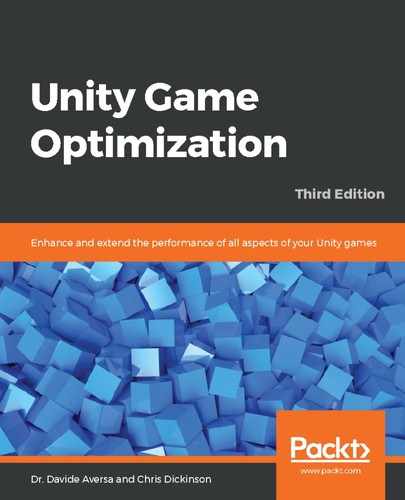Art is a famously subjective discipline, dominated by personal opinion and preference. It can be challenging to say whether, and why, one piece of art is better than another. Oftentimes, our opinions won't be able to find a complete consensus. The technical aspects behind art assets that support a game's artistry can also be very subjective. Multiple workarounds can be implemented to improve performance, but these tend to result in a loss of quality for the sake of speed. If we're trying to reach peak performance, then we must consult with our team members whenever we decide to make any changes to our art assets, as it is primarily a balancing act, which can be an art form in itself.
Whether we're trying to minimize our runtime memory footprint, keep the smallest possible executable size, maximize loading speed, or maintain consistency in frame rate, there are plenty of options to explore. Some methods are clearly always ideal, but most require a little more care and forethought before being adopted, as they would result in reduced quality or could increase the chances of developing bottlenecks in other subsystems.
In this chapter, we will explore how to improve performance for the following asset types:
- Audio files
- Texture files
- Mesh and animation files
- Asset bundles and resources
In each case, we will investigate how Unity stores, loads, and manipulates these assets both during application build time and runtime. We will also examine our options in the event of performance issues, and what we can do to avoid behavior that might generate performance bottlenecks.
